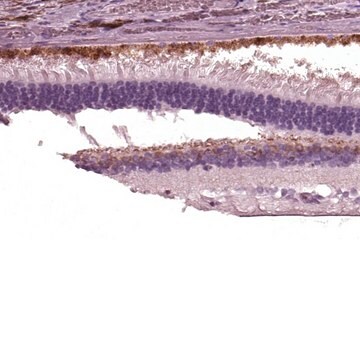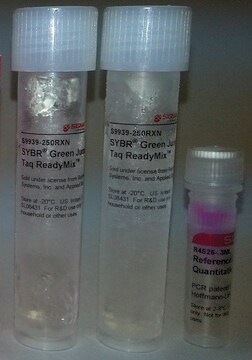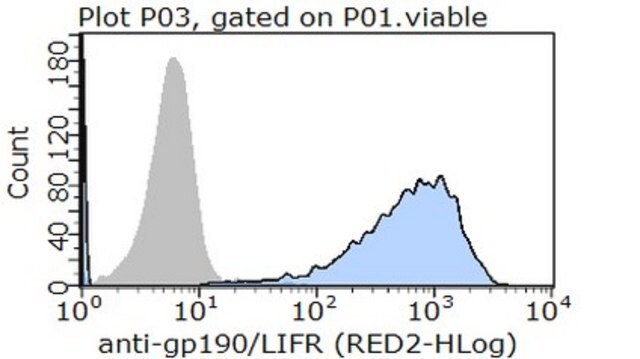Opis ogólny
C5a anaphylatoxin chemotactic receptor 1 (UniProt: P21730; also known as C5a anaphylatoxin chemotactic receptor, C5a-R, C5aR, CD88) is encoded by the C5AR1 (also known as C5AR, C5R1) gene (Gene ID: 728) in human. C5aR is a multi-pass membrane protein that serves as a receptor for the chemotactic and inflammatory peptide anaphylatoxin C5a. It exists as a homodimer, but can also form higher-order oligomers. C5a interacts with at least two sites on the receptor: a high-affinity site on the extracellular N-terminus, and a second site in the transmembrane region, which activates downstream signaling events. Receptor activation stimulates chemotaxis, granule enzyme release, and intracellular calcium release and superoxide anion production. Chemotaxis inhibitory protein of Staphylococcus aureus (CHIPS), a 121-residue protein, is reported to bind to the N-terminus of the C5aR (aa 1-35) with nanomolar affinity and inhibits C5a-mediated responses in human leukocytes. Sulfation at Tyrosine 14 is shown to be important for CHIPS binding. Upon C5a binding, C5aR) undergoes rapid phosphorylation on the six serine residues present in the C-terminal region followed by desensitization and internalization. The key residues involved in this process are Serine 334 and Serine 338. Phosphorylated C5aR is shown to co-localize with beta-arrestin 1 and 2 in cytoplasmic vesicles. Although C5aR activation is able to promote a loose association with beta-arrestins, but phosphorylation of either Serine 334)/338 or Serine 327)/338 is reported to be essential for the formation of a persistent complex. (Ref.: Ippel, JH., et al., (2009). J. Biol. Chem. 284(18); 12363-12372; Braun, L., et al. (2003). J. Biol. Chem. 278(6); 4277-4285).
Specyficzność
Clone 32-G1 specifically detects C5a anaphylatoxin chemotactic receptor 1 (C5aR) phosphorylated on Ser334. It targets an epitope within 18 amino acids from the C-terminal region.
Immunogen
KLH-conjugated linear peptide corresponding to 18 amino acids surrounding phophorylated Serines 332, 334, and 338 from the C-terminal region of human C5a anaphylatoxin chemotactic receptor 1 (C5aR).
Zastosowanie
Anti-phospho-C5aR_CD88 (Ser334), clone 32-G1, Cat. No. MABF1977, is a mouse monoclonal antibody that detects C5a anaphylatoxin chemotactic receptor 1 (C5aR1) and has been tested for use in ELISA, Immunofluorescence, and Western Blotting.
Research Category
Inflammation & Immunology
Western Blotting Analysis: A representative lot detected phospho-C5aR_CD88 (Ser334) in Western Blotting applications (Pollok-Kopp, B., et. al. (2007). J Biol Chem. 282(7):4345-53).
Enzyme Immunoassay Analysis: A representative lot detected phospho-C5aR_CD88 (Ser334) in Enzyme Immunoassay applications (Pollok-Kopp, B., et. al. (2007). J Biol Chem. 282(7):4345-53).
Jakość
Evaluated by Western Blotting using a mixture of two C5aR peptides corresponding to amino acids 327-344 (phosphorylated on Serine 332, 334, and 338) and amino acids 1-31 conjugated to BSA vs. irrelevant peptides conjugated to BSA (negative control).
Western Blotting Analysis: 1:20,000 of this antibody detected phospho-C5aR_CD88 (Ser334) in a mixture of two C5aR peptides corresponding to amino acids 327-344 (phosphorylated at Serine 332, 334, and 338) and amino acids 1-31, conjugated to BSA vs. irrelevant peptides conjugated to BSA (negative control).
Opis wartości docelowych
~100-110 kDa observed; 39.34 kDa calculated. Uncharacterized bands may be observed in some lysate(s).
Postać fizyczna
Format: Purified
Protein G purified
Purified mouse monoclonal antibody IgG1 in buffer containing 0.1 M Tris-Glycine (pH 7.4), 150 mM NaCl with 0.05% sodium azide.
Przechowywanie i stabilność
Stable for 1 year at 2-8°C from date of receipt.
Inne uwagi
Concentration: Please refer to lot specific datasheet.
Oświadczenie o zrzeczeniu się odpowiedzialności
Unless otherwise stated in our catalog or other company documentation accompanying the product(s), our products are intended for research use only and are not to be used for any other purpose, which includes but is not limited to, unauthorized commercial uses, in vitro diagnostic uses, ex vivo or in vivo therapeutic uses or any type of consumption or application to humans or animals.
This page may contain text that has been machine translated.









